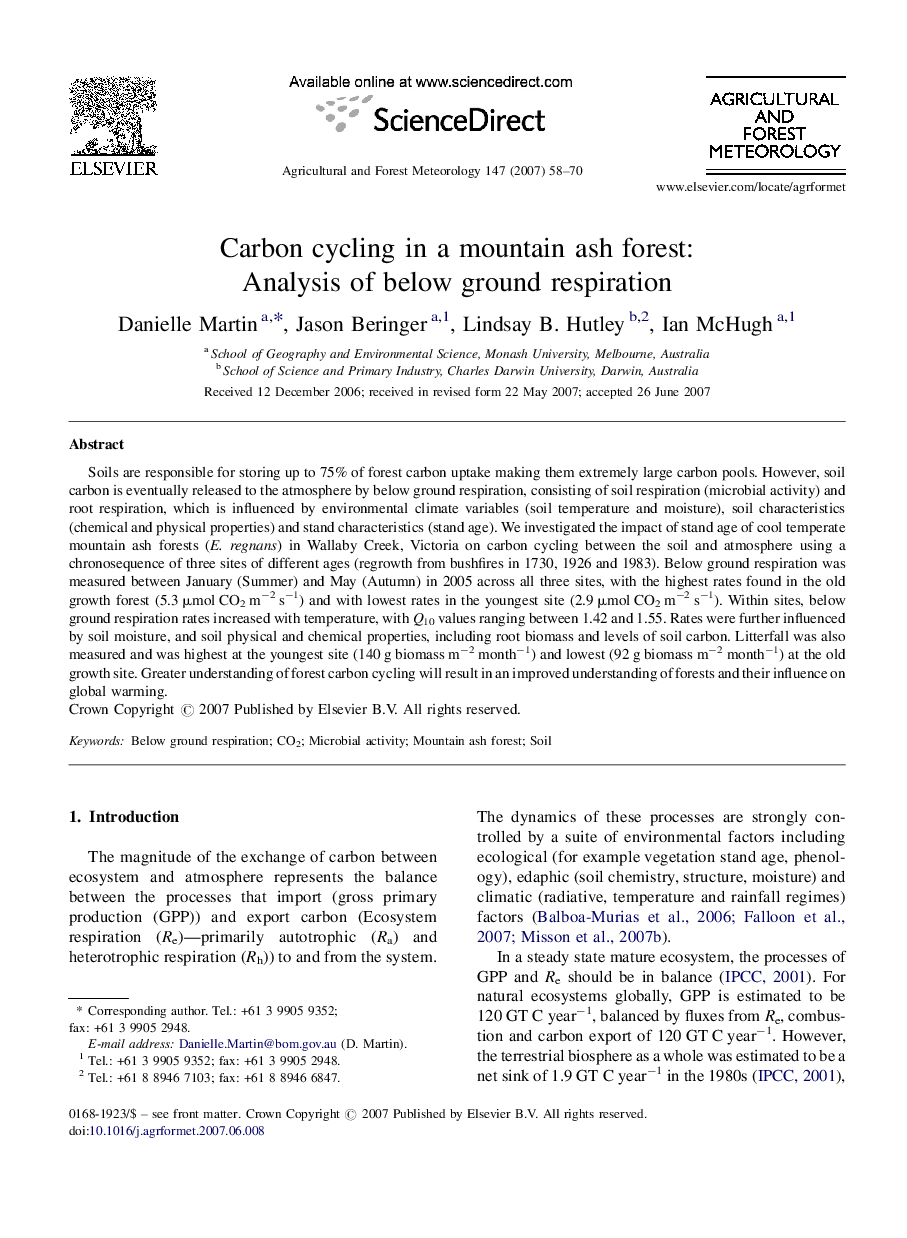| Article ID | Journal | Published Year | Pages | File Type |
|---|---|---|---|---|
| 82864 | Agricultural and Forest Meteorology | 2007 | 13 Pages |
Soils are responsible for storing up to 75% of forest carbon uptake making them extremely large carbon pools. However, soil carbon is eventually released to the atmosphere by below ground respiration, consisting of soil respiration (microbial activity) and root respiration, which is influenced by environmental climate variables (soil temperature and moisture), soil characteristics (chemical and physical properties) and stand characteristics (stand age). We investigated the impact of stand age of cool temperate mountain ash forests (E. regnans) in Wallaby Creek, Victoria on carbon cycling between the soil and atmosphere using a chronosequence of three sites of different ages (regrowth from bushfires in 1730, 1926 and 1983). Below ground respiration was measured between January (Summer) and May (Autumn) in 2005 across all three sites, with the highest rates found in the old growth forest (5.3 μmol CO2 m−2 s−1) and with lowest rates in the youngest site (2.9 μmol CO2 m−2 s−1). Within sites, below ground respiration rates increased with temperature, with Q10 values ranging between 1.42 and 1.55. Rates were further influenced by soil moisture, and soil physical and chemical properties, including root biomass and levels of soil carbon. Litterfall was also measured and was highest at the youngest site (140 g biomass m−2 month−1) and lowest (92 g biomass m−2 month−1) at the old growth site. Greater understanding of forest carbon cycling will result in an improved understanding of forests and their influence on global warming.
